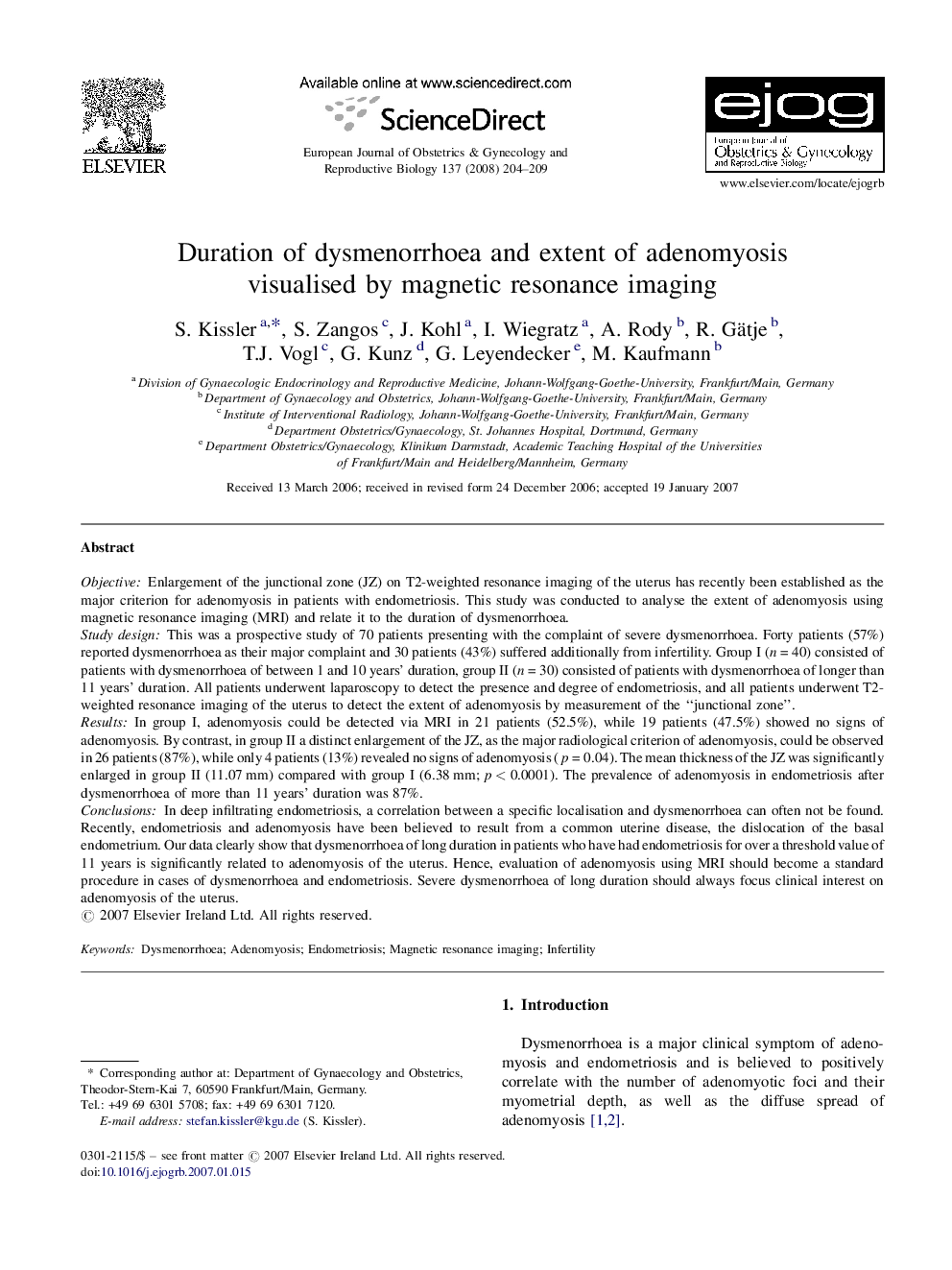| کد مقاله | کد نشریه | سال انتشار | مقاله انگلیسی | نسخه تمام متن |
|---|---|---|---|---|
| 3921931 | 1599879 | 2008 | 6 صفحه PDF | دانلود رایگان |

ObjectiveEnlargement of the junctional zone (JZ) on T2-weighted resonance imaging of the uterus has recently been established as the major criterion for adenomyosis in patients with endometriosis. This study was conducted to analyse the extent of adenomyosis using magnetic resonance imaging (MRI) and relate it to the duration of dysmenorrhoea.Study designThis was a prospective study of 70 patients presenting with the complaint of severe dysmenorrhoea. Forty patients (57%) reported dysmenorrhoea as their major complaint and 30 patients (43%) suffered additionally from infertility. Group I (n = 40) consisted of patients with dysmenorrhoea of between 1 and 10 years’ duration, group II (n = 30) consisted of patients with dysmenorrhoea of longer than 11 years’ duration. All patients underwent laparoscopy to detect the presence and degree of endometriosis, and all patients underwent T2-weighted resonance imaging of the uterus to detect the extent of adenomyosis by measurement of the “junctional zone”.ResultsIn group I, adenomyosis could be detected via MRI in 21 patients (52.5%), while 19 patients (47.5%) showed no signs of adenomyosis. By contrast, in group II a distinct enlargement of the JZ, as the major radiological criterion of adenomyosis, could be observed in 26 patients (87%), while only 4 patients (13%) revealed no signs of adenomyosis (p = 0.04). The mean thickness of the JZ was significantly enlarged in group II (11.07 mm) compared with group I (6.38 mm; p < 0.0001). The prevalence of adenomyosis in endometriosis after dysmenorrhoea of more than 11 years’ duration was 87%.ConclusionsIn deep infiltrating endometriosis, a correlation between a specific localisation and dysmenorrhoea can often not be found. Recently, endometriosis and adenomyosis have been believed to result from a common uterine disease, the dislocation of the basal endometrium. Our data clearly show that dysmenorrhoea of long duration in patients who have had endometriosis for over a threshold value of 11 years is significantly related to adenomyosis of the uterus. Hence, evaluation of adenomyosis using MRI should become a standard procedure in cases of dysmenorrhoea and endometriosis. Severe dysmenorrhoea of long duration should always focus clinical interest on adenomyosis of the uterus.
Journal: European Journal of Obstetrics & Gynecology and Reproductive Biology - Volume 137, Issue 2, April 2008, Pages 204–209